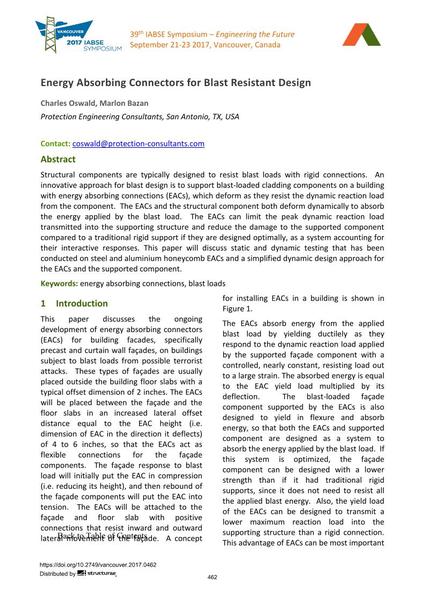Energy Absorbing Connectors for Blast Resistant Design

|
|
|||||||||||
Détails bibliographiques
| Auteur(s): |
Charles Oswald
(Protection Engineering Consultants, San Antonio, TX, USA)
Marlon Bazan (Protection Engineering Consultants, San Antonio, TX, USA) |
||||
|---|---|---|---|---|---|
| Médium: | papier de conférence | ||||
| Langue(s): | anglais | ||||
| Conférence: | IABSE Symposium: Engineering the Future, Vancouver, Canada, 21-23 September 2017 | ||||
| Publié dans: | IABSE Symposium Vancouver 2017 | ||||
|
|||||
| Page(s): | 462-469 | ||||
| Nombre total de pages (du PDF): | 8 | ||||
| Année: | 2017 | ||||
| DOI: | 10.2749/vancouver.2017.0462 | ||||
| Abstrait: |
Structural components are typically designed to resist blast loads with rigid connections. An innovative approach for blast design is to support blast-loaded cladding components on a building with energy absorbing connections (EACs), which deform as they resist the dynamic reaction load from the component. The EACs and the structural component both deform dynamically to absorb the energy applied by the blast load. The EACs can limit the peak dynamic reaction load transmitted into the supporting structure and reduce the damage to the supported component compared to a traditional rigid support if they are designed optimally, as a system accounting for their interactive responses. This paper will discuss static and dynamic testing that has been conducted on steel and aluminium honeycomb EACs and a simplified dynamic design approach for the EACs and the supported component. |
||||
